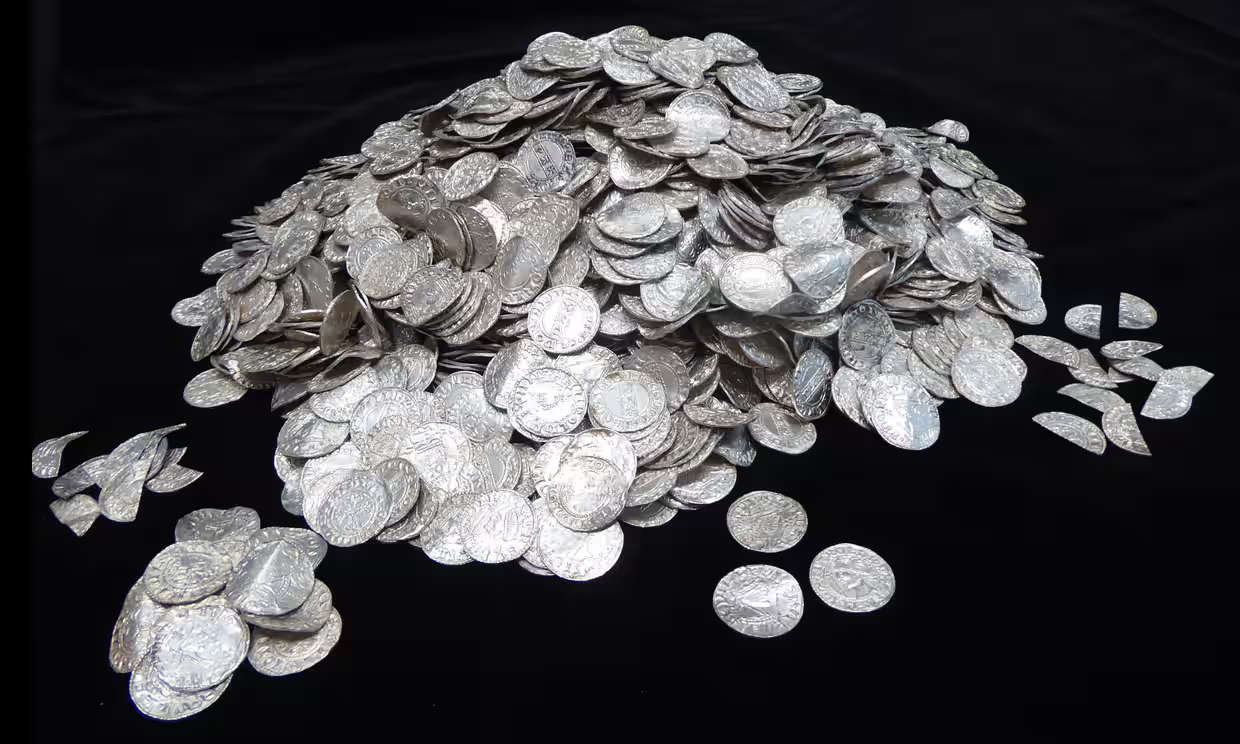In England, a treasure trove of 2,584 silver coins from the Norman era has been purchased for the sum of 4.3 million pounds (5.16 million euros), making it the most valuable archaeological discovery in the history of the United Kingdom. It is the so-called "Chew Valley treasure," a set of coins unearthed on Jan. 26, 2019, by seven metal-detector-equipped searchers who found it in a field in the Chew Valley area, not far from the southern city of Bristol. It is a pile of coins that archaeologists say was buried by its owner for security reasons at the time of the Norman conquest. On about half of the coins can be seen the effigy of Harold II, the last Saxon king of England, while the other half features the image of William I, Harold II’s successor. It is the largest set of Norman-era coins ever found in the country.
It was purchased for public use by the South West Heritage Trust, thanks to major funding, including from the National Lottery Art and Fund. The treasure will be on display at the British Museum starting Nov. 26, 2024: the idea is to send the coins on “tour” before they arrive at their permanent destination, which is the Museum of Somerset in Taunton, where they are scheduled to be displayed starting in 2026. The proceeds from the sale will be divided between the seven finders who found it and the owner of the land where the coins were located (50 percent to the owner, the remainder divided among the finders): in essence, each of them will receive a check for a few hundred thousand pounds. Under British law (Treasure Act of 1996), in fact, it is perfectly legal to go searching for treasures hidden in the ground: there is, however, an obligation to notify the relevant authorities of any discovery, and in the event that the authorities find that the property is of public interest, the discoverer is required to offer it for sale to a museum at a price set by the British Museum’s special valuation committee. After that, a sum is offered to the discoverers and other interested parties (in this case the landowner), proposed taking into account the market value of the treasure.
The value of the Chew Valley treasure, 4.3 million pounds, was determined primarily on the historical significance of these coins, the uniqueness of the find, their condition, collector interest, and the rarity of particular specimens, rather than on the intrinsic value of the silver of which they are made.
The coins date from roughly the years 1066-1068, or a turning point in English history, namely when England was successfully conquered for the last time at the Battle of Hastings in 1066. The treasure was buried during those very years, between 1067 and 1068, in an estate that later belonged to Giso, bishop of Wells. At the time of the discovery in 2019, the coins were found without a container and had been scattered following the action of a plow. The find was reported to authorities and deposited by the discoverers at the British Museum. The coins were later cleaned by the British Museum’s Conservation Department to enable them to be identified and catalogued.
The hoard contains twice as many coins from the time of Harold II as have ever been found before and increases the number of known early coins from the time of William I by nearly five times. All of William I’s coins are of the earliest design, issued shortly after his coronation on Christmas Day 1066. On one side of each coin is a portrait of the king with symbols of his authority (a crown and scepter) and an insignia consisting of his name and titles. The designs on the reverse often carried political or religious messages. The coins of Harold II bear the word “PAX” or “peace” and those of William a flowered cross.
“The treasure,” says Sam Astill, chief executive of the South West Heritage Trust, “symbolizes a pivotal moment in English history and we are delighted to have made this acquisition so that it can be appreciated by future generations. It highlights the power of museums, collections and stories to inspire people and communities and has been made possible by a wide range of partners who have worked together to ensure that our heritage is protected and accessible to all.”
 |
| They found a treasure trove of Norman coins underground: an entity bought it for £4.3 million |
Warning: the translation into English of the original Italian article was created using automatic tools. We undertake to review all articles, but we do not guarantee the total absence of inaccuracies in the translation due to the program. You can find the original by clicking on the ITA button. If you find any mistake,please contact us.